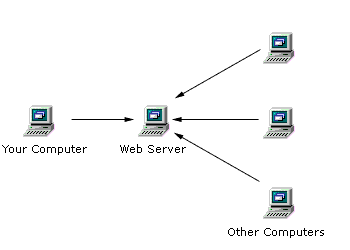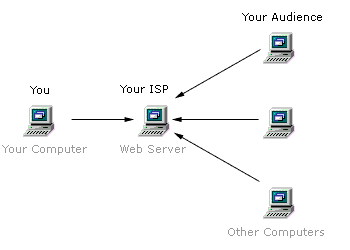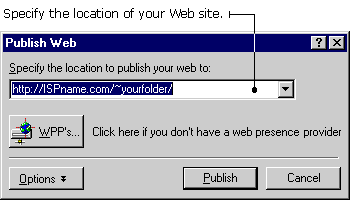
in conjunction with Microsoft Corporation.
Copyright 1999. All rights reserved.
|
|
![]()
-
You
need to "publish" your Web site before other people can see it on the
Internet.
While you were creating your site, you saved your Web documents on your own computer. To "publish" your site means to transfer these same documents onto a Web server. A Web server is a high-powered computer that places Web site files onto the Internet. Once your files are on the Web server, other computers can "connect" to the Web server and retrieve your files for viewing.

Publishing your Web site not only allows you to share it with the public, but it also lets you check out how your forms and databases work.
Your school may have its own Web server. If not, you'll have to find an Internet Service Provider (ISP) that will publish your Web site on its server. An ISP is a company that provides Internet access and rents space for people's Web site files.

Ask your ISP or your school's network administrator if your Web server has FrontPage 2000 Server Extensions. Server extensions are like special mini-programs. You can publish your Web site even if your server does not have these extensions - but you just need to do it a little differently.
To publish your Web site to a server with FrontPage 2000 Server Extensions:
1) Click File and choose Publish Web. The Publish Web dialog box appears.
2) Type in the location you want to publish your Web site to. The location will look something like this: http://ISPname.com/~yourfolder/. Your ISP or your school's network administrator will give you this location information.

3) Click Publish. FrontPage prepares to publish your Web site to the server.
To publish your Web site to a server without FrontPage Server Extensions:
1) Click File and choose Publish Web. The Publish Web dialog box appears.
2) Type the FTP server location. The location will look something like this: ftp.ISPname.com/~yourfolder/. Your ISP or your school's network administrator will give you this location information.

3) Click Publish. FrontPage 2000 prepares to transfer your files to the Web server.